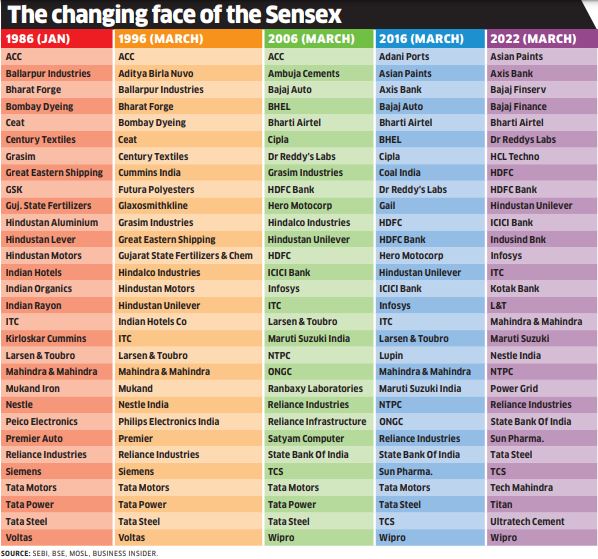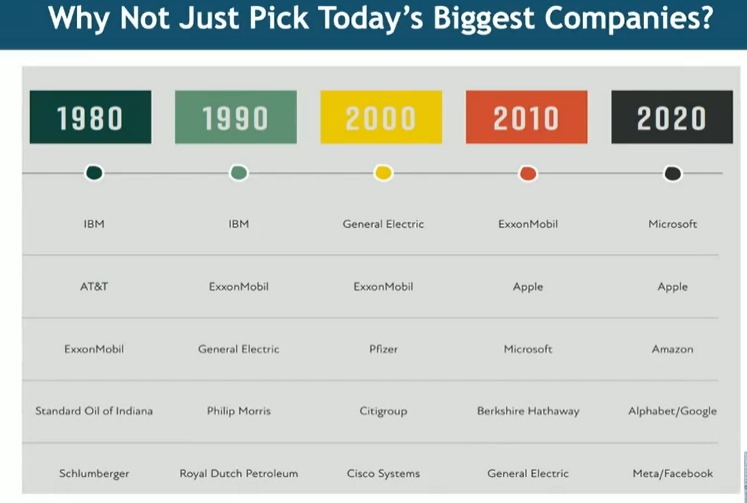Client: “Please suggest some good stocks to hold for the long term.”
Me: “Of course. Before I suggest any specific stocks, may I ask what qualities you associate with good companies?s?”
Client: “I think of big, successful blue-chip companies that are safe to invest in.”
Me: “Exactly. But did you know that even blue-chip companies can fail? In fact, some of the biggest and most successful companies in India and the United States have faltered over the years.
For example, Ballarpur Industries, Bombay Dyeing, Hindustan Motors, and Premier Auto in India were once some of the biggest and most successful companies in the country and were part of the Sensex, which comprises the top 30 companies in India’s stock market. However, they have all fallen by the wayside.
The same thing has happened to Yahoo, Kodak, GM, and Xerox in the United States.
In fact, many of us would not have heard about Ballarpur Industries, even though it was one of the blue-chip companies in India in the 1980s and 1990s.
What Defines Blue Chip Companies?
Blue chip companies are the giants of the stock market, renowned for their stability and success over the years. Many investors believe that these stocks are a safe bet for long-term growth.
The Changing Face of Sensex
In 1986, the Sensex launched with a basket of 30 blue-chip companies. Today, only seven of those companies remain in the index. The rest have either gone bankrupt, been acquired by other companies, or become insignificant.

Here are some examples of Indian blue chips that have failed to adapt to the changing environment and faded away:
- Hindustan Motors: It was once the largest car manufacturer in India. However, it failed to keep up with the competition from foreign carmakers and eventually went bankrupt in 2017.
- Bombay Dyeing: A textile company that was once one of the most prestigious companies in India. However, it has been struggling financially in recent years due to declining demand for its products.
Even the bluest of blue chips are not immune to failure. For example, at its peak in 2000, GE was the most valuable company in the United States, but today, it is a fraction of its former size.
The average lifespan of a company listed in the S&P 500 is now just 18 years, down from 61 years in 1958. This means that even the blue-chip company stocks that you buy today may not remain blue-chip in the next 18 years.

Why People Are Drawn to Individual Stocks
The Allure of the Big Win
People love the idea of buying individual stocks because of the potential for quick and big returns. They see stories in the news about people who have made millions by investing in a single stock, and they dream of having the same kind of success.
The Fear of Missing Out (FOMO)
People see their friends and colleagues making money in the stock market, and they don’t want to be left behind. This can lead them to invest in individual stocks without fully understanding the risks involved.
The Value of Diversified Mutual Funds
Diversified mutual funds are a good way to invest in the stock market without having to pick individual stocks. They are also a good way to reduce your risk, as they invest in a variety of different companies and sectors, which means that they are less risky than individual stocks.
The Myth of the Forever Blue Chip
The myth of the forever blue chip is a dangerous one. Even the most solid of these companies can fade away over time. A company that may appear invincible today could falter tomorrow unless it adapts and reinvents continuously.
The harsh truth is that picking winning individual stocks is extraordinarily challenging. Having the humility to accept this fact can significantly enhance your ability to accumulate wealth. Consider a diversified approach to investing, and remember that while diamonds may indeed be forever, blue-chip companies are not guaranteed to be.
.




